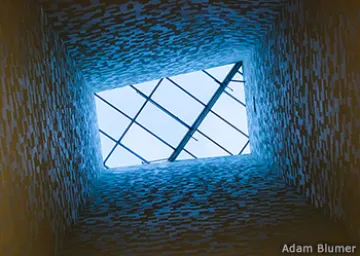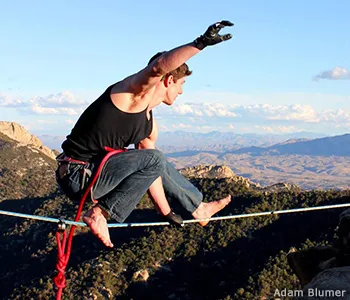Another Wavelength: Adam Blumer

This month, Another Wavelength sheds some light on senior undergraduate Adam Blumer from Scottsdale, Arizona.
What brought you to optics?
Freshman year I took an appreciation-for-photography history course. The final project was to write a paper about photography. Most student took this opportunity to analyze iconic photographic figures work, writing papers about Mario Testino, Ansel Adams and Sarah Silver. To the confusion of my professor I wrote a technical paper about Lytro, a light field capturing camera. I read through Ren Ng’s Lytro dissertation and explained the technology behind integral imaging and its potential implications – the art professor was so baffled by my paper that she gave me a 100 percent. The next day I switched my major to optical sciences and engineering.

Who would you call your science hero?
My hero in science is Henry Fox Talbot. He invented the calotype process, which greatly influenced the progression of photography. The reason I was drawn to Talbot’s work wasn’t for his knowledge of science and math (although extensive), but from a photographically illustrated book he wrote, "The Pencil of Nature." There are two inventions to photography: the physical process of recording the image and its application to society. "The Pencil of Nature" explored the latter. It was both Talbots’ comprehensive understanding of photography in science and his foresight into its potential uses for society during the 1840s that impressed me.
Describe your research in 20 words or fewer.
Heads-up display for an aircraft cockpit.

Describe your research in 200 words or fewer.
I’m working on a senior design project with Honeywell to redesign and build a HUD by improving optical performance and decreasing weight, size, cost and heat emission. My design uses a digital light projector as the image source, producing an intermediate image a throw distance away. This image is projected onto a spatial light diffuser so that it may be fully relayed by collimating optics located a focal length away. The collimated image then travels into a plane parallel plate, hits the rear surface where a reflective hologram is placed, diffracting the light so that the angle of reflection is greater than critical angle and allowing for the image to travel down the waveguide through total internal reflection. The image is then extracted from the waveguide by a second reflective hologram on the opposing side allowing the image to remain collimated at infinity so that the pilot may view it with a relaxed eye. This prevents accommodation and consequently eye fatigue.

Name three neat facts about you.
- I used to highline at Mount Lemmon, which is essentially tightrope walking across canyons.
- I am a photographer for Grand Central Clothing and Session Yoga.
- I use to be a national-caliber wrestler.
All photos, including the self-portrait on a highline, were taken by Adam Blumer.
